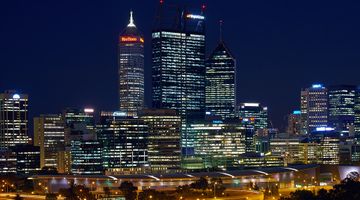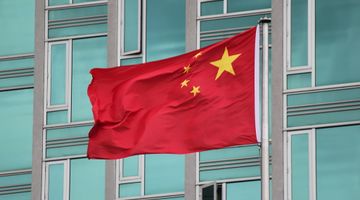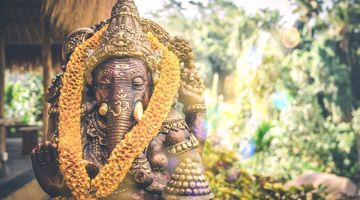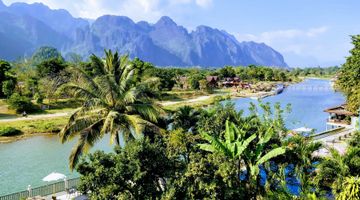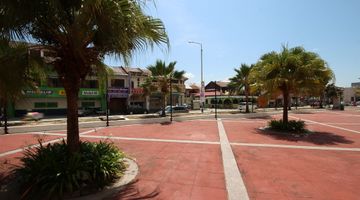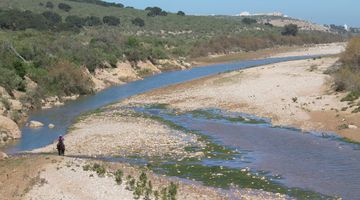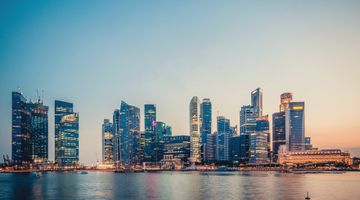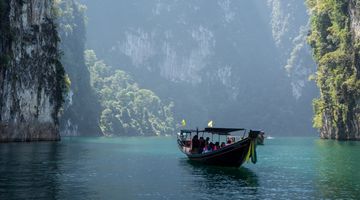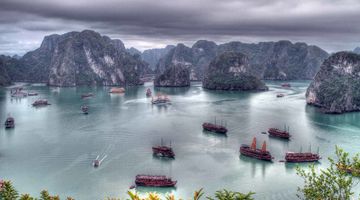Uzbekistan Travel Guide 2025: What to Know Before You Go
Uzbekistan is undoubtedly the Pearl of Central Asia. With visa-free access for over 90 countries, it’s easier than ever to visit. The high-speed Afrosiyob train connects major cities like Tashkent, Samarkand, and Bukhara in just a few hours. Expect new infrastructure upgrades ahead of 2025, especially around Silk Road sites. Local SIM cards are cheap and easy to get, and card payments are now widely accepted—even in smaller towns.
Weather in Uzbekistan
Uzbekistan has a dry continental climate: hot summers, cold winters, and very little rainfall. Summer (June to August) often hits 40°C, especially in cities like Bukhara or Termez, while winters (December to February) can drop below freezing, particularly in the north.
Spring (April-May) and autumn (September-October) are the most pleasant times to visit—mild, sunny, and relatively dust-free. Rain is rare and brief, mostly falling in early spring. Expect big temperature swings between day and night, especially in desert or mountain areas.
Where to travel in Uzbekistan?
Samarkand
Strategically located between China and Europe, Uzbekistan thrived during the Silk Road era, attracting traders, writers, artisans, and even Genghis Khan.
Samarkand offers more than just monuments—it’s a mix of polished landmarks and everyday life. The Registan, the city’s main draw, features three grand madrassas: Ulugbek, Sher-Dor, and Tilya-Kori. Once Islamic schools, their courtyards now sell souvenirs. The square is well restored and organized—worth seeing, but it can feel staged.
Beyond the main sights, Samarkand shows its real character. Residential streets with cracked pavement, stalls selling dried fruit, and locals going about daily life offer a more grounded view. The Bibi Khanum Mosque, massive and partially propped up by supports, is usually quiet, with a few people praying or resting in the shade.
Shah-i-Zinda stands out. This hillside necropolis feels lived-in, with weathered tilework and a stronger spiritual presence. The further you go, the less touristy it feels—people come here to pray, not pose. Registan may headline the brochures, but Samarkand’s atmosphere is in its side streets and small moments.
Where to go from Samarkand?
Samarkand to Tashkent
Samarkand to Bukhara
Samarkand to Khiva
Tashkent
Tashkent is not what people expect. It's not full of old buildings or ancient charm. It's a working city, large and spread out, with Soviet-era apartment blocks, clean parks, chaotic intersections, and a metro system that's surprisingly efficient and cool in summer.
You'll probably pass through Chorsu Bazaar. Locals buy rice in sacks, spices by weight, bread by the stack. The smell is a mix of raw meat, dill, and heat. You'll see more locals than tourists here. The Kukeldash Madrasah is next to it, but it's not very active. Things are always being built, repaired, or repainted. The streets are wide, the sidewalks are often empty.
The Tashkent TV Tower is tall but not particularly interesting unless you like structures. The parks are good for walking, and the fountains are usually working in summer. There's no central "old town." What you find instead are neighborhoods with personalities: some upscale, some falling apart, some in between.
Where to go from Tashkent?
Tashkent to Bukhara
Tashkent to Khiva
Tashkent to Almaty
Tashkent to Urgench
Bukhara
Bukhara is one of those cities where time feels slower. People walk at a different pace here, and there’s not much rush. The old part of the city is walkable, mostly flat, and easy to navigate without much planning.
The Kalon Minaret is hard to miss. It stands alone, slightly detached from the nearby mosque and madrasah. Nearby, the Kalon Mosque is usually quiet inside, even with visitors. You can step into the main courtyard and hear your own footsteps.
The Ark, the old citadel, looks impressive from a distance, but it’s partly reconstructed and doesn’t feel very alive. Still, it’s worth seeing for the scale and the sense of how cities used to be defended. Outside the Ark, there are usually a few souvenir sellers. Some of them sell old Soviet coins and dusty books, which are more interesting than the usual keychains.
Bolo Hauz Mosque is right across the street. It’s not large, but the carved wooden columns outside make it worth a visit. If it’s open, step inside — the prayer hall is modest and peaceful.
Lyabi-Hauz is the social center of the old city. It’s not a formal square, more of a public pond surrounded by chaikhanas (tea houses) and cafes. Locals and tourists mix here without tension.
Where to go from Bukhara?
Bukhara to Khiva
Bukhara to Urgench
Khiva
Khiva is small. You can walk from one end of the old city (Itchan Kala) to the other in under 15 minutes. The city walls are intact and well-maintained. Once you step inside, it feels self-contained. A place with its own rhythm.
Most of the historic buildings are inside the walls: the Kalta Minor minaret, the Tosh-Hovli Palace, the Djuma Mosque with its wooden columns. They're all close together. There's not much greenery, so the light bounces off pale mudbrick walls and creates a kind of washed-out effect, especially around midday.
Khiva is quiet in the mornings. The tour groups show up later, but early in the day the streets are mostly empty except for cats and a few shopkeepers. Some parts feel like a film set — too tidy, too preserved - but there are corners where you can find normal life: kids playing with sticks, a woman sweeping dust into the same spot over and over.
Fergana
Fergana is flat and quiet. Not rural, but definitely not fast-paced. Wide streets, dusty trees, and a sense that people are mostly just going about their business. You see more families, more schoolkids in uniform, more people walking instead of rushing. The markets are the liveliest part - loud in a matter-of-fact way, not theatrical.
There's not much here in terms of architecture or monuments, but the city feels lived in. What's interesting about Fergana isn't the city itself, but the way it connects you to other places - to Rishtan for pottery, to Margilan for silk, to Andijan for its strange mixture of old and new.
Termez
Termez is on the edge - geographically, historically, and atmospherically. It sits right up against the Afghan border, separated only by the river and a military presence you won't see but will feel. The city is quiet and spread out.
The Buddhist ruins on the outskirts are understated. Most are foundations, walls, and fragments. The archeological museum is worth an hour, especially if you want context. Don't expect polished exhibitions — it's more about fragments and traces. Foreign visitors are rare. There's a stillness here, not the sleepy kind - more the kind that comes with being far from the center of things.
Moynaq
Moynaq is quiet in a way that's hard to describe. Come here for the Aral Sea, or what's left of it. The ship cemetery is small. A few rusted boats sitting in sand. There's a museum nearby with old photos and maps showing where the water used to be. Locals speak directly.
The road to Moynaq is long and flat, and at some point, the landscape starts to look the same in every direction.
Nukus
Nukus is built like it was never meant to be visited. The roads are wide. The buildings are boxy. Most of them are beige or grey, and the city stretches out more than it rises. The reason people come here is the Savitsky Museum. It's not overhyped. The collection of banned Soviet art is genuinely impressive, and the layout is clean and simple. There's a strange tension between the modern-looking museum and the slow rhythm of the rest of the city. After a couple of hours inside, you walk out and wonder if you imagined the whole thing.
Outside the museum, Nukus is quiet. You'll see students, some construction, and a few cafes that all serve the same things.
Namangan
Namangan is one of the more conservative cities in Uzbekistan. You'll notice it in the dress, the behavior, and the general mood.
The city itself is functional, just markets, schools, mosques, and apartment blocks. There's a sense that life here is structured. The streets are clean, and the pace is steady. You'll hear less Russian spoken here than in Tashkent or Samarkand. Uzbek dominates, and so does a sense of tradition.
Urgench
Urgench is a transit city. Most people pass through it on the way to Khiva. The airport is small and efficient. The city itself is modern in the plainest sense - administrative buildings, a few parks, wide avenues with slow traffic. It feels like a regional capital.
If you stay overnight, you'll find a few good bakeries, a cinema, and some faded Soviet-era mosaics on public buildings. People are friendly, especially if you speak even a few words of Uzbek or Russian.
Amirsoy
Amirsoy is Uzbekistan's answer to ski tourism. The resort is new, modern, and mostly built for locals with disposable income and travelers from Tashkent looking for snow in winter or cleaner air in summer. It's slick and organized - almost too clean compared to the rest of the country.
In winter, there's actual snow, and the slopes are decent if you don't expect the Alps. There's a gondola, cafes with decent espresso, and plenty of people taking selfies in full ski gear whether they ski or not.
In summer, it turns into a hiking base, but the hiking scene isn't fully developed. Paths exist, but they're not always marked. Still, the views are sharp and dry - lots of rock, sky, and sun.
Amirsoy doesn't pretend to be authentic. It's commercial and comfortable. If you want nature, it's there.
Things to do in Uzbekistan
- Have tea at a chayhanna - it is a teahouse, traditional place to enjoy a cup of local herbal blend. Many teahouses have outdoor seating, making it an ideal place for a rest.
- Eat plov in a place that only serves plov. Go before noon. Ask someone where the locals eat, not the polished versions. The floor might be wet, and the spoons might be metal or plastic.
- Watch old men play chess in a park, for example, Tashkent. They don't look up. They've been doing this for decades. Sometimes there's a small crowd, sometimes just one opponent.
- Walk into a random Uzbek bakery in the morning.
Uzbekistan visa
Most travelers can enter Uzbekistan visa-free for up to 30 days, especially those from the EU, UK, and Japan. Others-including citizens of the U.S., India, and China-can apply for a 30-day e-visa online, usually processed in 1-3 days.
The e-visa costs around $20-$50 depending on the number of entries and requires a valid passport, photo, and Visa card for payment.
Technical issues (photo uploads, failed payments) are common, so applying early is smart. All travelers must register within 72 hours of arrival-hotels usually handle this automatically.
Uzbekistan Transportation
Getting around Uzbekistan is neither difficult nor seamless.
Trains
The high-speed Afrosiyob connects Tashkent, Samarkand, Bukhara, and (less frequently) Khiva.
It's modern, clean, and runs on time - probably the most efficient part of Uzbek infrastructure. Seats are numbered. Security is tight at stations, so arrive early. The slower Sharq or night trains still run too.
They're cheaper, older, and make more stops. If you're not in a rush, they're oddly calming - the rhythmic clatter, the tea carts, strangers offering you tomatoes or half a cucumber.
Uzbekistan Railways
A railway journey is a convenient way to explore the country. Uzbekistan Railways is one of the operators you can book a train ride with. Uzbekistan Railways offers first and second class sleeper berths for long trips and soft or hard seats for shorter routes, depending on availability.
Ticket options vary based on the route and travel time, with soft seats ideal for journeys under 4–5 hours and second class berths suitable for overnight travel.
Train travel is affordable, avoids traffic, offers convenient city-center stations, and can even save you a night in a hotel.
Food in Uzbekistan
Uzbek food is hearty, heavy on meat and rice, and built for long conversations and full stomachs. Plov is everywhere—sometimes greasy, sometimes perfect—with regional variations depending on the city.
Bread comes hot from clay ovens and is treated with a kind of sacred familiarity: you don’t cut it with a knife, and you don’t place it upside down.
Meals usually start with tea, even in the heat, and side dishes are often pickled, raw, or both. You’ll find lagman (hand-pulled noodle soup), shashlik (grilled skewers), and somsa (meat or pumpkin-stuffed pastries) almost everywhere—simple, repetitive, but oddly comforting.
FAQ
- Do people speak English? In major cities, some younger people and hotel staff speak basic English, but Russian is far more common. Outside tourist spots, expect hand gestures and patience.
- Is it safe? Yes. Street crime is low, and locals are generally respectful. Police presence is high, sometimes overly so, but tourists aren't usually bothered.
- Can I drink tap water in Uzbekistan? No. Stick to bottled water, even in Tashkent.
- What should I wear? Modest clothing is normal, but Uzbekistan isn't strict. In Tashkent or Fergana, you'll see both headscarves and tank tops. In rural areas, it's best to keep things covered.









